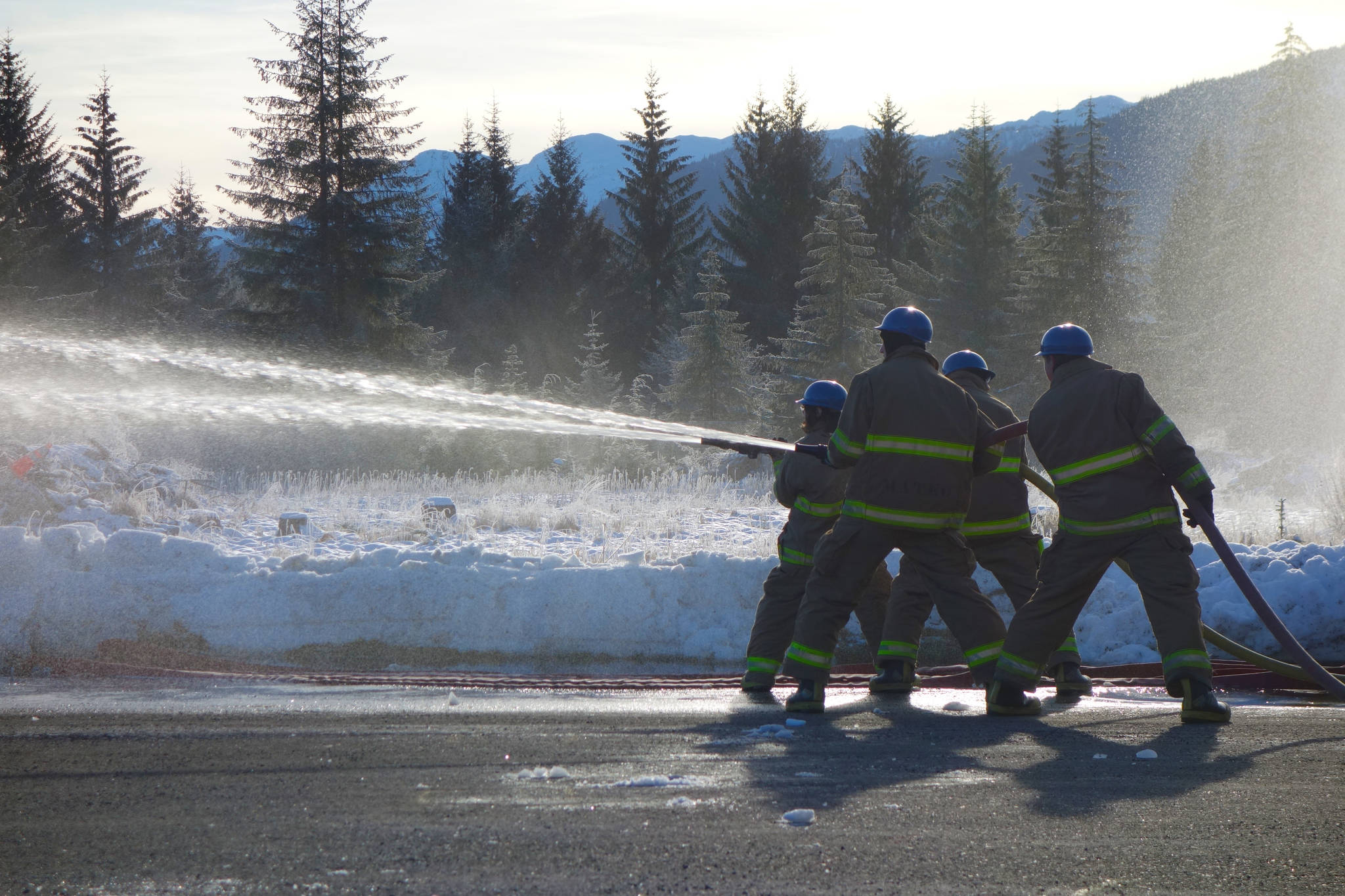Capital City Fire/Rescue — along with other City and Borough of Juneau departments, first responder agencies, and community volunteers — participated in a mass casualty emergency exercise at the Juneau International Airport in July.
We used this practice scenario: A small plane and a commercial airliner almost collide mid-air, resulting in the smaller plane crashing into the ocean and the larger plane crashing at the airport.
CCFR was tasked with responding to two separate emergencies — a water rescue and a fire response (from the land crash) — and more than 100 passengers.
The Federal Aviation Administration requires the airport to do exercises of this scale every three years (tabletop exercises are done in interim years).
But being prepared for an emergency is something CCFR is constantly working on and continually improving. September is National Preparedness Month. The goal is to promote family and community disaster and emergency planning.
It’s a good reminder because emergency preparedness is harder than it sounds, which is why CCFR and other agencies practice.
Juneau resident Daved Endo wrote about his experience as a volunteer during the airport emergency exercise in a July 23 My Turn. We appreciate reading his perspective and thank him for his willingness to volunteer.
Here’s a little more context to highlight some aspects of emergency exercises the public might not know.
Drills, inherently, have a lot of artificiality built into them — aspects that wouldn’t actually be there in a real life emergency. One artificiality of the July exercise was having to operate in an active airfield.
The first responders and volunteers had to work around the normal, everyday activity of the airport. In a real-life situation, the airfield would be closed and the response vehicles would be able to use the runway as needed.
In the drill, the response vehicles had to stay off the active runway and use alternative routes to get to the crash scene and the staged victims.
Another artificiality is holding back some CCFR resources to respond to real-life emergencies that occur while the drill is taking place.
The downtown engine and ambulance remained in service and responded to two real-life calls. Additionally, off-duty CCFR staff were not required to be at the drill. In a real emergency, all available CCFR resources would be used, as well as outside agency resources.
Emergency exercises are designed to push the limits of the first responders’ comfort zone to help foster growth. They allow many of CCFR’s newest members to practice in a high stress environment with very little chance of real life consequence.
Several members who were taking an Emergency Trauma Technician course were able to get some hands-on simulated experience during the July airport training.
Experienced staff were able to try out roles they don’t normally get to fill. This sort of learning environment during an exercise leads to a more knowledgeable and prepared staff in a real-life emergency.
In addition to the staged emergency problem-solving required, responders must also sort out “how” the drill is to be conducted. Comprehending what portion of the response is to be real, and what portion is to be simulated, can be very confusing.
For instance, in this particular drill, CCFR staff members were instructed to not carry any of the victims due to the potential for injuries, both to the rescuer and to the victim (CCFR frequently practices skills, like carries, in stand-alone drills).
In retrospect, this decision and other similar ones could’ve been communicated to the volunteer victims prior to the drill.
One realistic component of the drill was labeling the passengers as colors. The least severely injured, or the walking wounded, are green; the more seriously injured are yellow; the life-threatening are red; and the deceased or soon to be deceased are black.
The difficulty of “reverse” triage is deciding that a living person is not going to receive treatment. For example, someone in cardiac arrest is not going to get multiple medics working to revive them while there are 100 other patients in life-threatening conditions.
Medics have to make split-second decisions not to perform life-saving measures so they can do the most good for the most number of people.
Anyone that tells you their department is ready for a 737 jet to crash at their airport is in denial about the realities of such an event.
These are life-altering events for everyone involved. Thank you to those who participated in the drill, especially the community members who volunteered their time and were often left in the dark as to what was going on.
Without community volunteers, CCFR staff wouldn’t be able to practice and grow through the exercise. Figuring out our weaknesses is why we drill.
• Rich Etheridge is the fire chief of Capital City Fire/Rescue. My Turns and Letters to the Editor represent the view of the author, not the view of the Juneau Empire.

